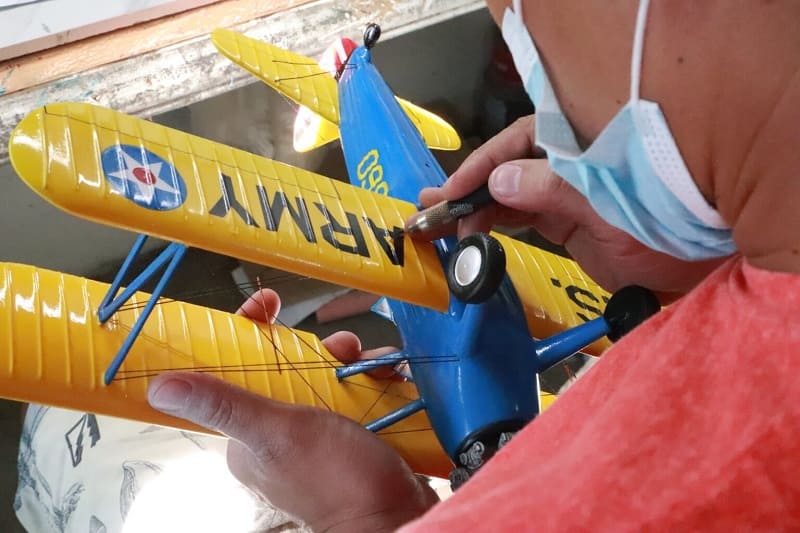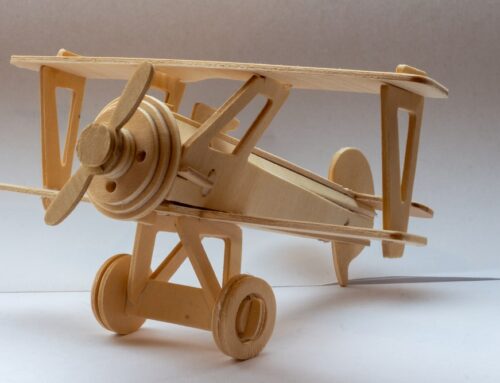Creating custom models is a labor of love. Whether you’ve designed an intricate ship replica, custom aircraft models, a delicate architectural masterpiece, or an exquisite sculpture, preserving and displaying your work requires careful attention and proper care. In this guide, we will explore the best practices for preserving and displaying your custom models, ensuring they remain in pristine condition for years to come.
1. Preserving Your Custom Model

Cleaning and Dusting
Regular cleaning and dusting are crucial to maintaining the beauty and integrity of your custom model. Begin by inspecting the model for any loose or delicate parts. Use a soft, lint-free cloth or a brush with fine bristles to gently remove dust and dirt from the surface. Avoid using harsh chemicals or abrasive materials that could damage the model’s finish. For intricate details or hard-to-reach areas, consider using compressed air or a soft brush to dislodge any debris without causing harm.
Handling with Care
When handling your custom model, always use clean, dry hands to prevent transferring oils or moisture onto the surface. Support fragile parts with one hand while holding the base or sturdy areas with the other. Avoid applying excessive pressure or bending delicate components, as this can cause irreversible damage. If you need to move the model to a different location, wrap it carefully in acid-free tissue paper or a soft cloth to protect it during transit.
Storage Conditions
Proper storage is crucial to prevent damage to your custom model. Keep it in a cool, dry place away from direct sunlight, extreme temperatures, and high humidity. Exposure to these elements can lead to discoloration, warping, or degradation of materials. Consider using a display case or a storage box with acid-free tissue paper to protect the model from dust, moisture, and accidental impacts. If possible, store the model in a vertical position to minimize the risk of stress on delicate parts.
Environmental Factors
Be mindful of environmental factors that can harm your custom model. Avoid displaying it near vents, fireplaces, or areas prone to excessive vibration. Additionally, keep it away from areas with high levels of smoke, pollutants, or airborne particles, as these can settle on the model and cause damage over time. If you live in an area with frequent earthquakes or other natural disasters, secure your model in a display case with sturdy locks or consider using earthquake-resistant mounts to protect it from potential damage.
2. Displaying Your Custom Model
Choosing the Right Display Case
Selecting an appropriate display case is essential for showcasing your custom model while providing adequate protection. Look for a display case made of high-quality materials, such as acrylic or glass, that offer UV protection to prevent fading or discoloration. Ensure the case has a tight seal to keep out dust and insects. If your model is particularly valuable or fragile, consider investing in a custom-made display case that provides additional support and security. The display case should have removable panels or easy access points for cleaning and maintenance.
Positioning and Lighting
When choosing the display location for your custom model, consider the lighting conditions. Direct sunlight can cause fading and damage over time, so opt for ambient or artificial lighting that enhances the model’s features without compromising its integrity. Experiment with different lighting angles to highlight specific details or create a captivating display. LED lights are a popular choice due to their low heat emission and adjustable brightness. Consider using spotlights or accent lights to create focal points and add drama to the overall presentation.
Mounting Options
Depending on the nature of your custom model, you may need to explore mounting options to ensure stability and prevent accidental falls. Consult with professionals who specialize in custom mounting solutions to find the best method for your specific model. Consider factors such as the model’s weight, fragility, and desired display position when selecting a suitable mounting option. Common mounting options include using clear acrylic rods, discreet wire supports, or custom-designed stands that blend seamlessly with the model’s aesthetics.
Rotating Displays
If you have multiple custom models or want to showcase different angles of your masterpiece, consider incorporating a rotating display mechanism. This allows viewers to appreciate your work from all sides without physically handling the model. Ensure the rotating mechanism is stable, smooth, and doesn’t put any strain on the model’s structure. Electric or battery-operated turntables are readily available and offer a convenient solution for rotating displays.
Conclusion
Preserving and displaying your custom models requires a combination of careful handling, proper storage, and thoughtful presentation. By following the guidelines outlined in this comprehensive guide, you can ensure that your treasured creations remain in impeccable condition for generations to come. Remember, the key to successful preservation lies in regular maintenance, protective measures, and a deep appreciation for the artistry and craftsmanship that went into creating your custom model. With proper care, your custom models can continue to inspire and captivate viewers for years to come.


